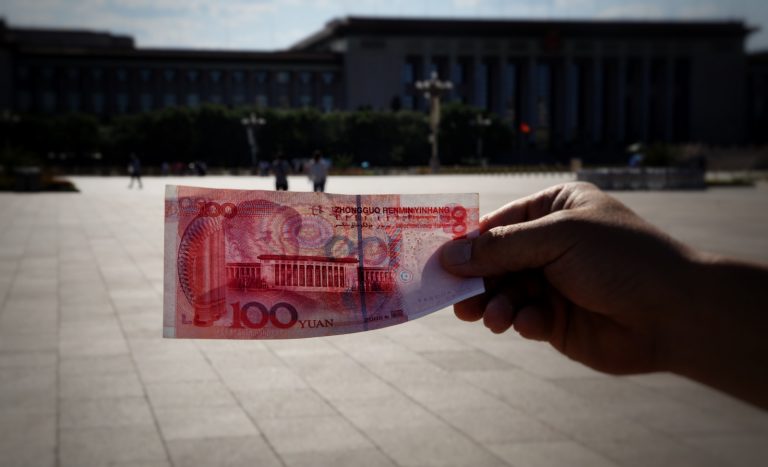The global financial landscape is undergoing a profound transformation. As the digitization wave sweeps across industries, the realm of currency is also evolving rapidly. At the forefront of this evolution is China, a dominant global player, which has pioneered the change with its innovative Digital Yuan. In this article, we’ll offer an in-depth exploration of the intricacies of the Digital Yuan, shedding light on its significance, underlying technology, and the potential ramifications it may have on the world economy.
Historical Context: China’s Financial Evolution
China’s financial story is an epic tale of transformation. Historically, the nation’s currency revolved around the silver tael. As modernization kicked in, the paper yuan emerged as a dominant medium of exchange. Over the past decade, however, digital platforms like Alipay and WeChat Pay revolutionized payments. Their massive success demonstrated China’s appetite for digital transactions, setting the stage for the birth of the Digital Yuan. This shift is not just a mere adaptation but a strategic move to assert China’s monetary authority, domestically and globally.
The Digital Yuan: Technical Foundations
Central Bank Digital Currencies (CBDC) vs. Cryptocurrencies
Both CBDCs and cryptocurrencies utilize the underpinnings of distributed ledger technology, yet they diverge significantly in their core principles. While cryptocurrencies such as Bitcoin operate on a decentralized framework without central oversight, CBDCs, exemplified by the Digital Yuan, are overseen by state authorities and derive their valuation from the respective national economies.
Infrastructure
The Digital Yuan employs a structured two-tier approach in its operations. Initially, the central bank is responsible for issuing the currency to established commercial banks. Following this, these commercial entities take on the role of disbursing the Digital Yuan to the general populace. This methodical process facilitates a smooth integration with China’s prevailing financial systems.
Minting Process
In contrast to cryptocurrencies, which require energy-intensive computational processes for mining, the Digital Yuan is directly issued by the People’s Bank of China, resulting in a significantly more energy-efficient creation method.
Features and Benefits: The Digital Yuan’s Unique Proposition
Real-time Settlement
Transactions are settled instantly, eliminating the traditional banking delays and reducing transaction costs.
Privacy and Oversight
While the Digital Yuan offers transactional privacy from third parties, it is transparent to the central authority, ensuring that illegal activities can be swiftly curtailed.
Cross-Border Efficiency
With the Digital Yuan, cross-border trade can be streamlined, potentially bypassing the current SWIFT system and reducing reliance on the US dollar.
Smart Contracts
The Digital Yuan can potentially integrate programmable conditions, automating processes and reducing fraud.
Pilots and Implementation: The Digital Yuan in Action
By 2021, several Chinese cities like Shenzhen, Suzhou, and Beijing had introduced pilot tests. Feedback was collected from millions of users, revealing insights into its real-world applications and challenges.
Integration with Current Systems
For widespread adoption, the Digital Yuan is being integrated with existing payment infrastructures, making transitions smoother for businesses and individuals.
The Global Implications: A Shifting Monetary Landscape
Challenging the US Dollar
The Digital Yuan poses a potential threat to the dominance of the US dollar in global trade, offering an alternative that might be faster and more efficient.
Belt and Road Initiative
Countries partnering with China in this massive infrastructure project might find it beneficial to transact in the Digital Yuan, further increasing its global influence.
Global Reactions
Countries like Japan, South Korea, and even the European Union are researching or piloting their own CBDCs, understanding the tectonic shift the Digital Yuan represents.
Challenges and Criticisms: Navigating Uncharted Waters
Concerns Over Centralization
The centralized nature of the Digital Yuan has sparked debates about state surveillance and the potential for misuse.
Monetary Policy
With a digital currency, traditional financial stabilizers may be impacted, requiring China to rethink aspects of its monetary policy.
Technological Challenges
As with any novel technology, scalability, security, and interoperability are areas needing continuous refinement.
Conclusion: The Road Ahead for the Digital Yuan
As we usher in a digital age, the Digital Yuan stands out not merely as another currency but as a testament to modern financial evolution. Its trajectory, be it filled with successes or obstacles, will play a pivotal role in reshaping China’s economic architecture and will set precedents for global monetary systems. Within this emerging framework, platforms like Beijing’s Response to Cryptocurrency Trend offer a gateway for trading the digital Yuan. The foundational design and strategy behind the Digital Yuan could potentially serve as a benchmark for other nations, heralding a transformative phase in global financial dynamics.


0 Comments